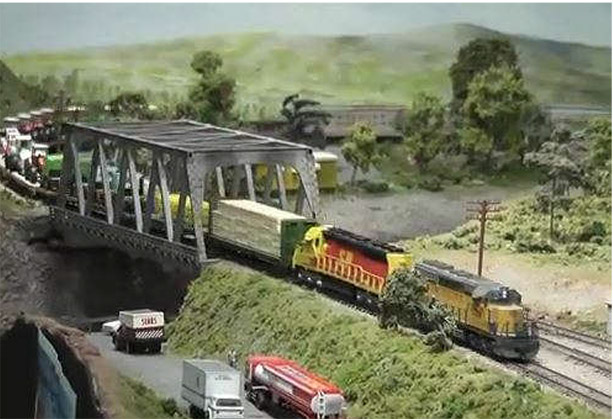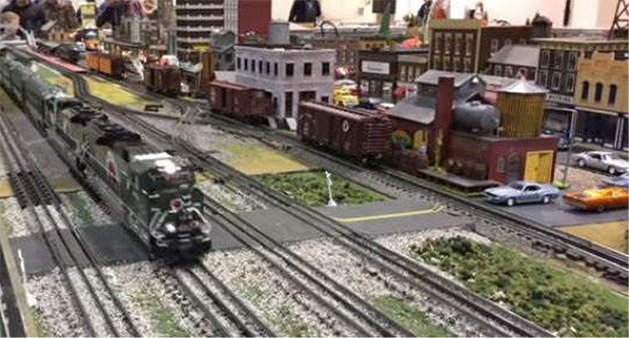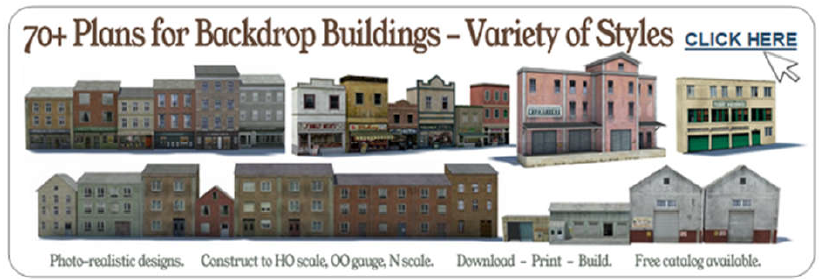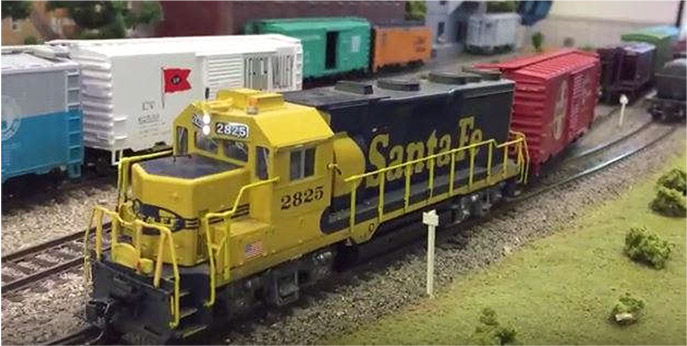Planning Your Railway Layout Around The Story of Your Rail Line
All railroads are about transportation of goods and people from one place to another. When you move beyond the train set stage into true modeling of a railroad, you are telling a story about your railroad. You could certainly build your model by placing random scenery elements about the benchwork, but the very best model railroads show and tell the story of how their existence came about through a need to move cargo from point A to point B.
Railroads in agricultural areas exist to move crops and livestock from harvest to market. Railroads in coal producing areas move raw coal to steel mills. Railroads everywhere are created to move products from factories to distribution or sale points. Your railroad will be much more realistic if it mimics these needs and displays how it meets them in creative and unique ways. © Copyright http://www.modelbuildings.org All rights reserved.
It might help you to envision how your rail-road layout (pike) might have come to be by creating a short fictional story about it. Perhaps a small group of fruit growers came together and invested in the creation of a short line to carry their fruit to a larger city or to another region where it can be sold. In doing so, there might be rivers to cross (bridges) or chasms to span (trestles) or mountains to traverse (tunnels and switchbacks). Each challenge represents an opportunity to model the technology and innovation that over-comes it
Scale model buildings that can be downloaded from this website range in variety from US and UK style structures, through to house plans that replicate homes in Australia, New Zealand, or Canada. There are plans for making commercial and industrial buildings from differing eras, as well as plans farm structures, shops, and various residential properties in OO gauge, HO scale, and N scale.
Many modelers take advantage of the real world and duplicate the operation of a real prototype railroad in miniature. Creating a small piece of the actual railroad down to the last detail can occupy many years of work! Some modelers choose a short period in the history of the railroad to model exactly. The steam-to-diesel transition era mentioned before is a very popular period in history with modelers because of the wide variety of interesting equipment the railroads used. Some modelers get right down to the detail of modeling a certain month or even day in history such as September 22nd, 1940. Indeed, choosing what and when you will model is one of the best features of this particular hobby. There is so much to choose from!
Planning Your Layout
Although the previous two steps were presented in a logical order, most modelers begin doodling track plans long before they figure out where to put them. In fact, nearly everyone will create a fabulous track plan and THEN try to find a place to put it. Unfortunately, reality then strikes and the plans are scaled back to a more manageable level.
In any case, there are a number of ways to go about layout planning and design. The most common is to search the internet or acquire one or more books of sample track plans. There are literally hundreds of de-signs that have appeared over the years and it should be easy to find one of interest that can serve as a starting point for your own variation.
There are templates available for curves, turn-outs, and special tracks if you choose to do your planning with good old pencil and paper. They are relatively inexpensive and are availa-ble in most scales to help accurately plan your layout into the available space. When you free-hand a design and get to the point of construc-tion, you often find that the curve or turnout you’ve selected for a particular location just won’t fit. That’s when the accurate to-scale plan will keep you out of trouble.
When computers arrived on the scene, it wasn’t very long until track planning software began to show up. Now there are many programs that help you fit your dream into your space, then easily change things around if you want to play the “what-if” game. Many of them allow you to create virtual scenery around the layout and to run virtual trains as well. The full-featured programs can get pricey and usually have a fairly steep learning curve to exploit every function they provide. They are definitely worthwhile if you do a lot of changing your mind!
The software typically uses libraries of objects such as track sections, turnouts, crossings and other special purpose track. Like the rest of the marketplace, the HO scale object libraries are more comprehensive and complete.




